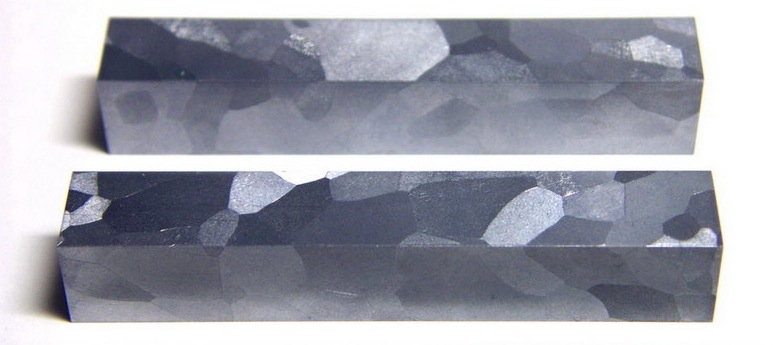Vanadium

Vanadium
Image by Alchemist-hp pse-mendelejew.de - source Wikpedia -
This image file is licensed under the Attribution-Share Alike 2.0 Germany license.
Vanadium - overview
Vanadium, element no. 23 in the periodic table, is a silvery transition metal. It was discovered in 1801 by Andrés Manuel del R'o, in a lead ore called "brown lead", which later became known as vanadinite. [1]
It is resistant to corrosion and the action of sulphuric and hydrochloric acids. The majority of vanadium used is in the form of ferrovanadium - which is created from reduction of vanadium oxide, iron oxide and iron in a furnace. [1]
All vanadium compounds are considered toxic and OSHA has set maximum exposure limits for vanadium workers.
Vanadium Resources and Production
Vanadium's distribution is widespread. It does not occur as a pure metal in nature, but is found in over 65 minerals - including vanadinite, patronite, magnetite and carnotite. Magnetite is the main source of commercially used vanadium. Most of the world's vanadium (over 95%) is mined in South Africa, China and eastern Russia. Some vanadium is produced as a byproduct of other processes - for example uranium mining and steel smelting. Vanadium is also found in fossil fuels. [1]
Around 58,000 tonnes of vanadium was produced in 2007. [1]
Vanadium Uses
The primary use of vanadium (around 85%) is in steel alloys, in which it adds durability and strength. Vanadium steels are used in widespread applications where extra strength is required - such as construction, aircraft, transportation, tools, axles, gears, high speed drilling and industrial hardware. [1] [2] Vanadium steel is employed in parts that need very high strength, such as automobile engine pistons, oil drilling platforms and frames of high rise buildings. [3]
Vanadium is also added, with aluminium, to titanium alloys and these are used in jet engines and other aerospace structural components. Vanadium adds strength and temperature stability to titanium alloys.[1]
Some vanadium alloys show superconductive properties, such as vanadium-silicon and vanadium-gallium. Vanadium-gallium tape is used in superconducting magnets. [1]
Vanadium pentoxide has a number of uses - including as a catalyst in the manufacture of sulphuric acid, in ceramics and in glass coatings. [1]
Vanadium is currently being investigated as a material in new battery technology - including a high capacity battery that can be left discharged without suffering damage. Such batteries are being considered for large scale applications such as wind power, in which it could help even out power delivery. [2]
Most of the vanadium used today comes from primary sources - and very little is recycled. The world has significant Vanadium reserves and these are expected to last into the next century if consumption continues at the current rate. However, vanadium is not currently economically viable to mine in the United States and so the US is dependent on imports and the integrity of the supply chain. [2] Many of the uses of vanadium as a component in steel alloys could be substituted with other metals, however vanadium currently has no viable substitute in titanium alloys used by aerospace technologies. [4]
Vanadium Facts
| Name | Vanadium |
| Symbol | V |
| Atomic Number | 23 |
| Melting point (Celsius) | 1910ºC |
| Density | 6.11 g/cc |
| Hardness (Moh) | 6.7 |
| Resistivity (nanoOhms / meter at 20ºCelsius) | 197 |
Vanadium References:
[1] http://en.wikipedia.org/wiki/Vanadium
[2] http://minerals.usgs.gov/minerals/pubs/commodity/vanadium/myb1-2008-vanad.pdf
[3] http://www.mii.org/Minerals/photovan.html
[4] http://minerals.usgs.gov/minerals/pubs/commodity/vanadium/mcs-2010-vanad.pdf

This website is not investment advice or a recommendation to buy or sell.


